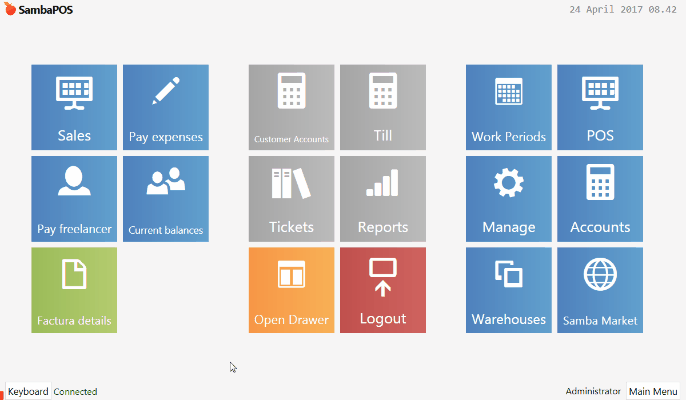@mjb2000, curious to know what program you are using for capturing video?
I am using http://www.screentogif.com/
There is an option I have just discovered which allows the option to include a progress bar which gives a good indication of where we are within the looping video.
Is this the functionality you were talking about in terms of crediting the account even when it is at zero?
That is what made me notice a difference. I use ShareX as many others on the Forum do. I wonder if it has an option for progress bar.
Not exactly. I was using a dummy 0-price product similar to what you are doing, but keeping that Product at 0 and switching the Payment Screen to Balance Mode, which allows Payments to Entity Account. But if the Account was in Credit (ie. Balance <= 0) then the Payment Screen would not allow to post more Credit to the Account. Maybe @emre could make that possible in the next update. But your method with changing the Product Price seems to work almost as well.
I agree, the Payment Screen seems like the natural way to do this for all the rest of the functionality it has built in already. The Account Statement method requires a lot of Automation to be built out to support that same functionality, which seems unnecessary when the Payment Screen already does everything.
Yes, this was partly my concern - because it departs so much from the core. Because my knowledge is quite limited, I wanted to stick to core functionality as closely as possible.
One this I like about going through the POS screen is that the account payment can be made at the same time as purchasing other products. In the example below…
- The customer already owes money
- I press “Clear Balance” to add an account top-up equivilant to the outstanding balance (just created this option
 )
) - I then add additional items to the bill
- Finally the whole bill is settled using USD and Credit Card (with surcharge)

Quick Question: How can I make the display of the “Clear Balance” dependeant on the customer having an outstanding balance? I already have a contraint in the rule to prevent the action firing is the balance is not >0 but I would prefer to hide the button altogether.
Those buttons visibility is controlled by states. So to do that you need to create a state flow that can read balance do some quick function to check if balance is there then set state. You can set visibility to that state in the Automation Command Mapping.
Since your using Tickets you would use an event like Entity Changed or Ticket Created event and use the Update Ticket State action and a constraint that includes your validation. The validation constraint can use Printer tags to check balance.
Hi @emre
Do you have any idea when you might realease the next update? I am nearly ready to go-live so trying to work out if I should wait for this to be available, or just traing staff on work arounds instead?
Check Beta release to find out. There may be no notes to this regard, but that doesn’t mean it wasn’t included in latest beta, which as of now is 5.2.2 … I am running it in Production now at 2 Venues.
I am in the #v5-beta group, but I don’t see a 5.2.2 thread - Am I not in that one? I was wondering why I hadn’t seen anything for over 1 month?..
5.2.2 is in the 5.2.1 Beta Topic. It should really be titled 5.2.x 
Ah thanks! 
I just tried it, and it seems it is still not updated… 
For this version, when payment with customer account first time, transaction can be pay.
But at second time with same customer account, we can’t pay with it. And Sambapos crash
You need to show us the crash error report. But typically a crash on payment means misconfigured transaction types.
I have temporarily got around this by…
- creating a misc account called “Customer account hack”
- adding a payment type to pay this misc account
- create an account transaction type and document type to move money from this hack account to a customer account (leaving the specific customer account blank)
- create a rule which is triggered when that hack payment type is used
- in this rule, trigger the account transaction document to credit the current customer’s account
The new rule, or bug may be, credit customer account must zero, so it can be use for payment.